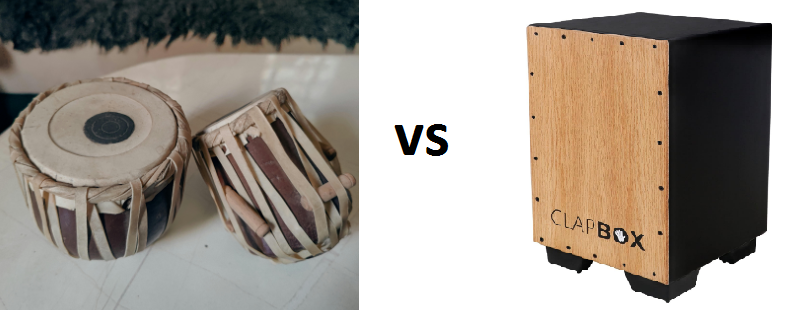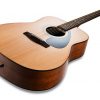
If you’re drawn to rhythm and percussion, you’ve probably come across two popular instruments: the tabla, a staple of Indian classical music, and the cajón, a box-shaped drum originating from Peru but now widely used in acoustic and fusion music. Both offer unique learning experiences, sounds, and cultural significance — but which one should you learn first?
In this guide, we break down the key differences, pros, and considerations to help you choose the instrument that fits your personality, musical interests, and lifestyle.
What Is a Tabla?
The tabla is a pair of hand drums — the smaller dayan (right drum) and larger bayan (left drum) — known for their intricate rhythms and tonal depth. It’s deeply rooted in Indian classical, devotional, and even Bollywood music.
- Origin: India
- Material: Wood (dayan), metal/clay (bayan), with goat-skin drumheads
- Playing Style: Played with fingers and palms using complex patterns called “bols”
- Used In: Classical, devotional, fusion, folk, and film music
- Famous Players: Zakir Hussain, Anindo Chatterjee, Bikram Ghosh
Watch a tabla solo by Zakir Hussain: YouTube Link
What Is a Cajón?
The cajón (pronounced “ka-hone”) is a wooden box drum that you sit on and play by striking the front face with your hands. Originally from Afro-Peruvian traditions, it has become hugely popular in acoustic rock, flamenco, and indie music.
- Origin: Peru
- Material: Wood box with snare wires inside
- Playing Style: Slapped with palms and fingers on front plate
- Used In: Flamenco, acoustic sets, pop, indie, fusion
- Famous Players: Mario Cortes, Pedro Barceló, percussionists in MTV Unplugged India
🎧 Watch cajón in action during an teaching session: YouTube Link
Tabla vs Cajón: Which Is Easier to Learn?
- Cajón is generally easier for beginners. It has a straightforward technique, and you can start playing simple rhythms within a day or two.
- Tabla has a steeper learning curve. It requires formal instruction to master proper hand positioning, strokes, and rhythmic cycles (taals).
Choose Cajón if you want quick results, play acoustic gigs, or accompany a singer-songwriter.
Choose Tabla if you’re passionate about Indian classical music and ready to commit to deep learning.
Price & Portability
| Feature | Tabla | Cajón |
|---|---|---|
| Cost | ₹3,000 – ₹15,000+ | ₹4,000 – ₹10,000+ |
| Size | Two drums, moderately bulky | One compact box |
| Portability | Moderate (requires a case) | Easy to carry & store |
Which One Suits Your Style? Tabla or Cajón.
- Like meditative, complex rhythms and deep cultural roots? Go for the tabla.
- Prefer groovy, punchy beats and playing with acoustic bands? Try the cajón.
Also, consider your musical goals:
- Tabla fits well if you want to explore Indian ragas, film music, or fusion.
- Cajón suits jam sessions, open mics, and casual performances.
Final Verdict: Trust Your Ears and Hands
Here’s a table vs Cajón video if you’re interested.
You may also want to check out these links below if you are planning to buy a tabla or a Cajón.


